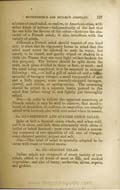Italian salads are composed of every variety of raw salads, added to all kinds of meat or fish, and cooked vegetables; and also of tunny, anchovies, olives, capers, and pickles.
Cut two cold potatoes and half a beetroot in slice half an inch thick, punch these out with a long tin vegetable cutter, and put them into a basin with equal quantities of green peas, heads of asparagus, buds of cauliflower or brocoli, small Windsor beans, cut French beans, boiled celery, seakalc, Brussels sprouts, cooked haricot beans or lentils.
Let it be clearly understood that, although every kind of vegetable named above form component parts of an Italian salad, yet it is not intended that they should all be used for that purpose at one and the same time: due regard must be had to what is in season, without losing sight of the fact that, in all cases, it is essential to study economy and convenience:—thus, for instance, beetroot and potatoes being at all times easily obtained, let these and some kind of salad in season be mixed in equal proportions; to these add any three or four sorts of cooked vegetables you may happen to have, a little shred ham, fowl or game, tunny, anchovies, pickles, or olives; season with vinegar or Tartar sauce, mix lightly together, and serve in a salad-bowl.
Note.—These salads are also used for garnishing aspic borders, and cold entrees of fish.
